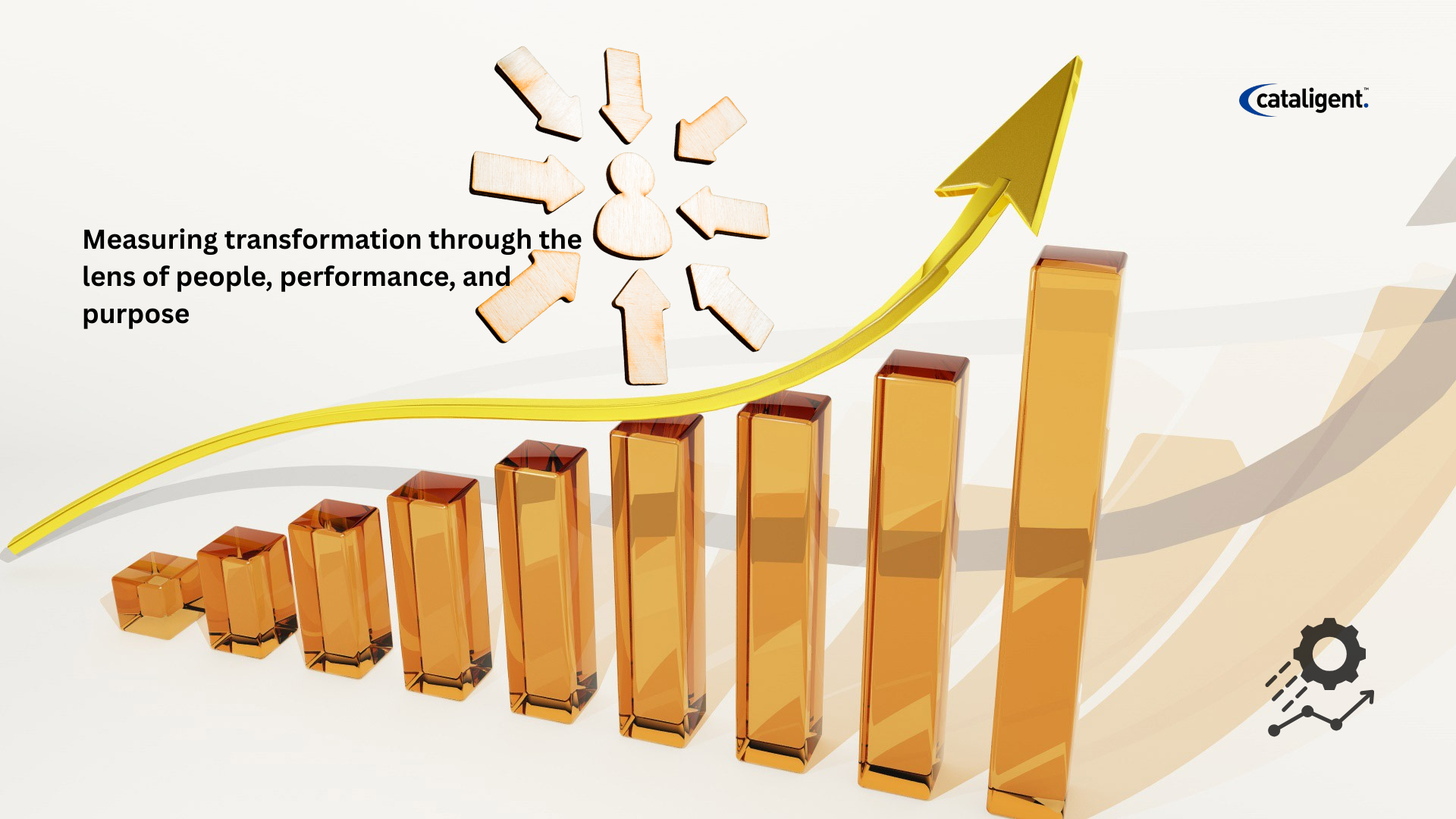Enterprises often measure transformation success using the same set of traditional metrics: ROI, cost savings, productivity, and time-to-market. While these indicators are valuable, they miss the most critical dimension of modern business transformation: people. Without human alignment, adoption, and engagement, even the most well-funded initiatives can collapse.
Human-centric metrics provide organizations with a more holistic way of assessing transformation success by focusing on employee experience, cultural adaptability, and customer value perception. This shift is not about replacing financial KPIs, but about complementing them with measurements that capture the true drivers of long-term change.
What are Human-Centric Metrics?
Human-centric metrics are performance indicators designed to measure the human impact of transformation. These metrics assess:
- Employee Engagement: Are employees motivated and committed to transformation goals?
- Change Adoption Rates: How quickly and effectively are new tools, systems, or processes being adopted?
- Collaboration Quality: Are silos breaking down and cross-functional teams thriving?
- Learning Agility: How quickly can teams acquire new skills and adapt to shifting strategies?
- Customer Value Perception: Do customers recognize tangible improvements as a result of transformation?
Instead of only measuring what the organization gains, these metrics evaluate how well people thrive within the transformation journey.
Why They Matter for Businesses Today
1. Traditional Metrics Don’t Capture Failure Early Enough
A project may be on budget and on time, yet still fail due to resistance to adoption. Human-centric metrics act as early warning systems.
2. Employee Engagement is Transformation Fuel
Research consistently shows engaged employees drive higher productivity, innovation, and retention. Measuring engagement ensures organizations address cultural gaps before they become obstacles.
3. Cultural Agility Determines Long-Term Success
Transformation isn’t a one-off event—it’s ongoing. Companies with adaptable cultures weather change better, and metrics make adaptability visible.
4. Customer Value is the Ultimate Test
If customers don’t perceive improvement, transformation hasn’t delivered value. Human-centric metrics tie internal change directly to external outcomes.
How Cataligent Enables Human-Centric Measurement
Cataligent’s CAT4 platform integrates human-centric metrics into transformation governance, ensuring that the human factor is embedded in every stage of business transformation.
1. Engagement Tracking
CAT4 offers dashboards that track engagement levels across departments, surfacing where resistance is strongest and where interventions are needed.
2. Adoption Monitoring
Through impact–feasibility scoring and workflow automation, CAT4 highlights adoption rates of new processes, identifying where change management needs reinforcement.
3. Collaboration Mapping
CAT4 helps visualize cross-functional collaboration and flags bottlenecks where teams remain siloed, empowering leaders to break barriers.
4. Capability Building Metrics
By integrating learning and development tracking, CAT4 shows how quickly teams are acquiring new capabilities to support transformation.
5. Customer Value Linkage
CAT4 aligns internal transformation KPIs with customer-facing outcomes, ensuring business change translates into measurable value for clients.
Illustrative Examples with CAT4 in Action
- Employee Engagement Insights: A global bank used CAT4 to monitor employee sentiment during a digital overhaul. Engagement data revealed fatigue in certain regions, prompting targeted communication strategies that boosted morale.
- Adoption Metrics: A manufacturing firm rolled out a new ERP system. CAT4’s dashboards showed adoption lagging in procurement, enabling managers to provide focused training and improve uptake.
- Collaboration Tracking: A healthcare provider discovered that innovation projects were stalling due to siloed departments. CAT4 visualizations highlighted the gaps, helping leaders restructure workflows for better collaboration.
- Customer-Centric Metrics: A retail enterprise tied CAT4’s transformation dashboards to NPS (Net Promoter Score) data, showing a direct link between internal process changes and improved customer loyalty.
The Business Transformation Angle
Human-centric metrics redefine how organizations perceive success. Transformation cannot be declared complete until employees are engaged, teams are adaptable, and customers recognize value. Financial outcomes remain vital, but they are lagging indicators; human metrics are the leading indicators that predict whether financial results will sustain.
Cataligent’s CAT4 platform ensures that these human dimensions are tracked with the same rigor as financial ones, embedding them into transformation governance.
Conclusion: The Human Lens on Transformation
Business transformation isn’t just a systems upgrade or a financial exercise—it’s a human journey. By embedding human-centric metrics into transformation strategies, organizations not only achieve adoption and engagement but also build cultures that are future-ready.
With CAT4, Cataligent enables enterprises to combine financial rigor with human insight, turning transformation from a top-down directive into a collective movement.
Transformation succeeds not when systems change, but when people do.

